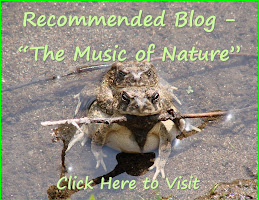
I was off work a little early today to pick the kids up from school, so I used the extra daylight hours to do one of my favorite things – nest searching.
Sounds easy right? Wrong! Nest searching requires a lot of time and even more patience. When birds are protecting eggs and nestlings they can be incredibly cautious and stealthy. If they get a notion that they are being watched travelling to or from the nest they will change their route to approach from another direction, stay away for extended periods of time or try to lead the voyeur away from their dwelling.
There are various ways to search for nest: some intrusive and some more benign. The more intrusive methods are typically conducted for serious biological research, where the searcher must assess the number of nesting birds in a given area, these can include such things as chain-dragging (!?) or systematically walking with a sweeping stick and flushing the birds from their nest (both methods for use in areas of tall grass nesting birds). Less intrusive, much more time consuming but also more rewarding are searching by behavioral observation. This method requires extended periods of observation, watching adult birds for clues that they have a nest nearby. Clues that can tip an observer off to the presence of a nest include: 1. Alarm ‘chipping’ (a series of distressed chip notes), 2. Flushing when the observer is within 5 meters and flying only a short distance. 3. Nest material, food or fecal sacs (tiny bundles containing excrement) being carried. 4. Male and female birds remaining in close association with one another. 5. Distraction displays. 6. Repeated flights to the same spot and 7. The ‘begging’ vocalizations of nestlings.
It was that ‘begging’ sound that caught my ear this afternoon as I patiently watched a large, dense patch of Manzanita. I was hoping to prove that the Nashville warbler that has been singing from this spot for the past month-and-a-half has a nest nearby. While I did find my Nashville, still singing regularly from a variety of perches, I could neither find an associated female or reliably detect any of the other expected ‘telltales’. But what was immediately obvious was the incessant ‘tikking’ of a group of small birds moving erratically from bush to bush.
My first thought was bushtits – the sound was reminiscent of their stuttering vocalizations. But mixed in was a partial song, a short but sweet trill that sounded like orange-crowned warbler. Before long I was able to focus briefly on an adult orange-crowned. The bird seemed to be accompanied by a swarm of frenetic activity. In short order I found the source of the sound and movement, as a fledgling orange-crowned warbler fluttered it’s stubby wings in an insistent gesture meaning “feed me”! Two to three others chased the parent bird from bush to bush, demanding to be fed.
Overhead, a small shadow bounded from across the road into a hole at the top of a slender, long dead black oak. Another flurry of begging sounds came from the hole and moments later the shadow, actually an adult red-breasted nuthatch, reappeared at the entrance to the cavity and bounded off to get more food.
These are the reasons that I so enjoy nest searching. Sure it’s time consuming, but the rewards of observing birds during this exciting time are well worth the investment.
photo by Joseph Higbee http://www.pbase.com/jvhigbee/g_juveniles











